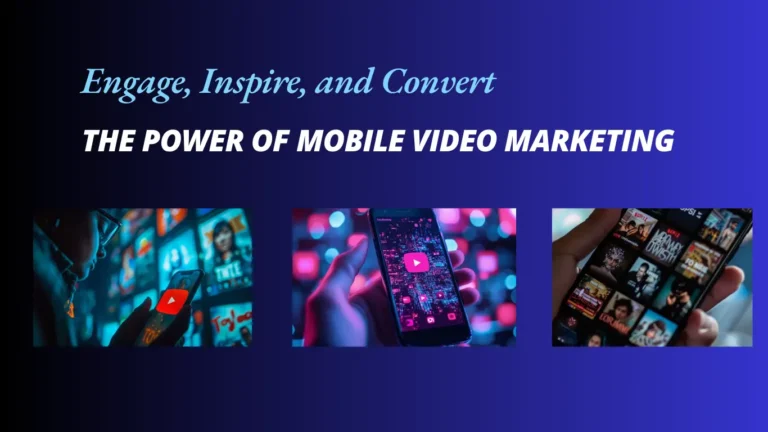Measuring Mobile Content Marketing Effectiveness

With the increasing shift to mobile platforms, businesses need to ensure that their mobile content marketing strategies are not only well-designed but also effectively driving results. Measuring mobile content marketing effectiveness is essential to understand how content performs and to identify areas for improvement. This article outlines the best methods to measure the success of mobile content and offers strategies to enhance its impact.
Table of Contents
Why Measuring Mobile Content Marketing Effectiveness Is Crucial
In the fast-paced world of digital marketing, mobile users expect personalized, fast-loading, and engaging content. Measuring the impact of your mobile content marketing effectiveness efforts allows you to adapt to these expectations, ensuring a high return on investment (ROI). By analyzing key performance indicators (KPIs) and user behavior, businesses can make data-driven decisions that refine their strategies and achieve better result.
Key Metrics for Measuring Mobile Content Marketing Effectiveness
Tracking the right metrics is fundamental to understanding how well your mobile content is performing. Here are some of the most important metrics to consider:
1. Mobile Traffic and User Engagement
Monitoring mobile traffic provides insight into how many users access your content through mobile devices. Use tools like Google Analytics to track metrics such as:
- Sessions: Number of visits from mobile users.
- Average Session Duration: Indicates how much time users spend engaging with your content.
- Bounce Rate: High bounce rates might suggest that your content isn’t engaging enough for mobile visitors.
Tip: Compare mobile traffic to desktop traffic to identify any disparities in engagement levels.

2. Conversion Rates and Mobile Sales
Mobile conversion rates measure how effectively your content drives users to take desired actions, such as signing up for a newsletter, making a purchase, or downloading an app. According to a study, mobile users convert at an average rate of 1.82%, compared to 3.9% on desktop.
Improving conversion rates may involve optimizing your landing pages, using clearer calls-to-action (CTAs), and simplifying the checkout process for mobile users.
Image Suggestion: A graph comparing mobile versus desktop conversion rates, illustrating the importance of optimizing content for mobile users.
3. Content Engagement Metrics
Metrics like click-through rate (CTR), shares, likes, and comments on social media posts provide insight into how well your mobile content resonates with your audience. A higher engagement rate indicates that your content is relevant and valuable to users. Use these metrics to assess the effectiveness of different content formats, such as videos, infographics, or blog posts.
4. Mobile App Metrics
For businesses with mobile apps, monitoring in-app behaviors is crucial. Key metrics include:
- App Downloads: Indicates the reach and popularity of your app.
- Active Users: Tracks how many users interact with your app regularly.
- User Retention Rate: Measures how many users continue using your app after their initial download.
Tip: Use Mixpanel or Firebase for a deeper analysis of in-app user behavior and to understand where users drop off during their journey.
Tools for Measuring Mobile Content Marketing Effectiveness
Several analytics tools can simplify the process of tracking and analyzing your mobile content marketing effectiveness efforts:
- Google Analytics: A comprehensive tool for tracking website traffic, user behavior, and conversions across different devices .
- Mixpanel: Focused on user behavior within mobile apps, Mixpanel helps businesses understand how users interact with their app features.
- SEMrush: Useful for tracking the performance of your mobile SEO efforts, including keyword rankings and traffic sources.
- Hotjar: Offers heatmaps and session recordings that reveal how mobile users navigate through your website, highlighting potential usability issues.
Strategies for Enhancing Mobile Content Marketing Effectiveness
Once you’ve measured your content’s performance, the next step is to optimize your strategy based on the insights gathered. Here are some proven strategies to enhance the effectiveness of your mobile content:
1. A/B Testing for Continuous Improvement
A/B testing involves comparing two versions of a piece of content or a landing page to see which one performs better. By testing different headlines, images, or CTA placements, you can identify what resonates most with your audience and refine your approach.
Example: A/B testing different CTA colors or wording can result in a 20% increase in conversions.
2. Optimizing User Experience (UX) for Mobile
A seamless user experience is critical for keeping mobile users engaged. Focus on:
- Responsive Design: Ensure your content adapts to different screen sizes.
- Speed Optimization: Reduce page load times to improve user retention, as 53% of users abandon a site that takes longer than three seconds to load.
- Intuitive Navigation: Simplify menus and use large, tappable buttons to enhance ease of use.
3. Personalizing Content Through Data Insights
Use the data gathered from your analytics to create personalized content that speaks directly to user preferences. Personalization can significantly enhance user engagement and retention by delivering relevant content at the right time.
Example: E-commerce brands can use browsing history to recommend products, while blogs can suggest articles based on a user’s reading patterns.
4. Enhancing Content Through Interactive Elements
Adding interactive elements such as quizzes, polls, or sliders can make your content more engaging. Interactive content encourages users to spend more time on your site or app, which can positively impact SEO rankings and user retention rates.
Tip: Interactive content is especially effective on social media platforms like Instagram Stories and TikTok, where users are looking for quick and engaging experiences.
Case Studies: Brands That Enhanced Their Mobile Content Strategy
1. Starbucks’ Personalized Mobile App Experience
Starbucks uses its mobile app to deliver a highly personalized experience, sending users location-based offers and tracking their purchase history to suggest relevant promotions. This approach has helped the company maintain high user engagement and loyalty.
2. Nike’s Interactive Social Campaigns
Nike’s social media campaigns focus on short, engaging videos and interactive elements like polls and challenges on Instagram and TikTok. These campaigns have resulted in higher user engagement and better brand visibility among younger audiences.
Conclusion: Maximizing the Impact of Mobile Content Marketing
Measuring mobile content marketing effectiveness is not a one-time task but a continuous process that allows businesses to adapt to changing user preferences and technological advancements. By tracking key metrics, leveraging analytics tools, and refining content based on data insights, businesses can significantly enhance their mobile marketing results. Staying agile and responsive to user feedback ensures that your content remains relevant and engaging, ultimately driving better outcomes for your brand.







2 Comments
Comments are closed.